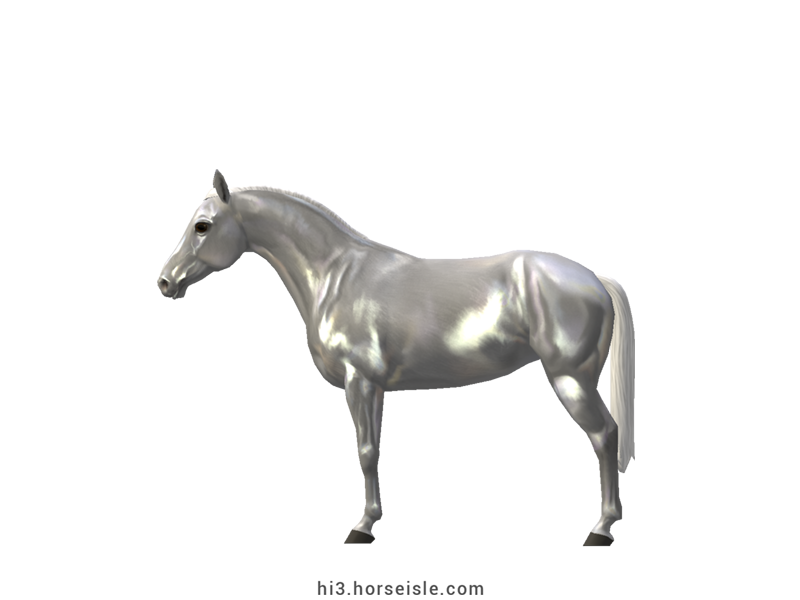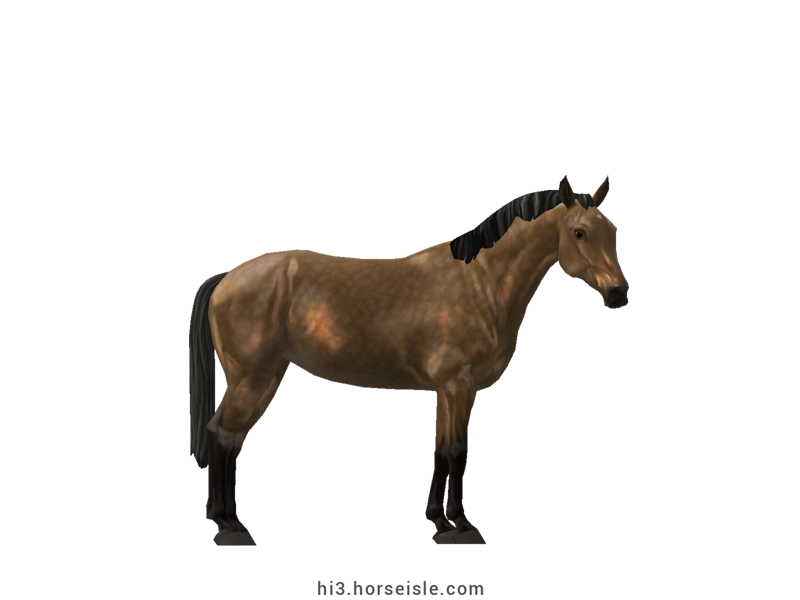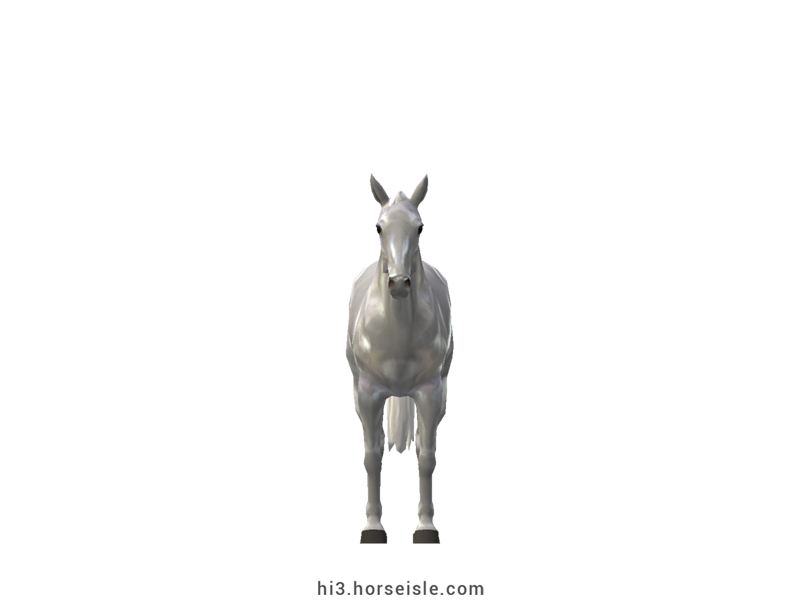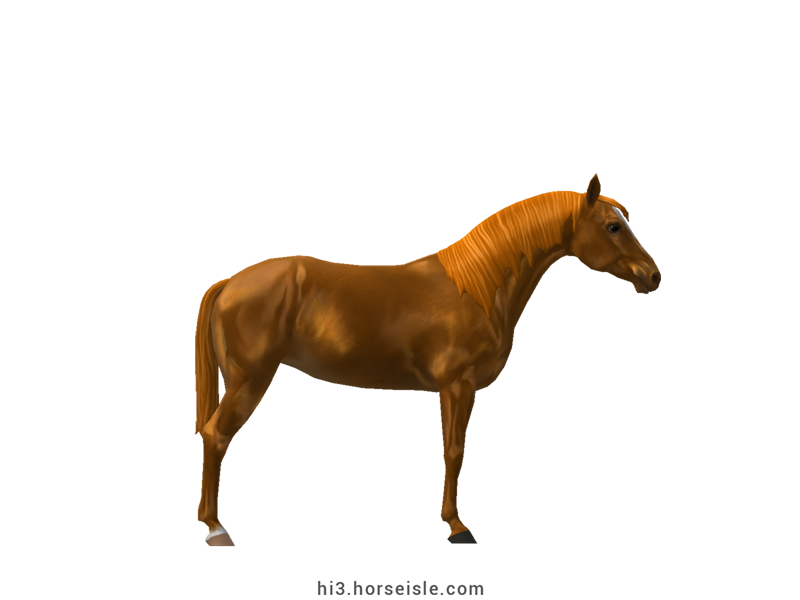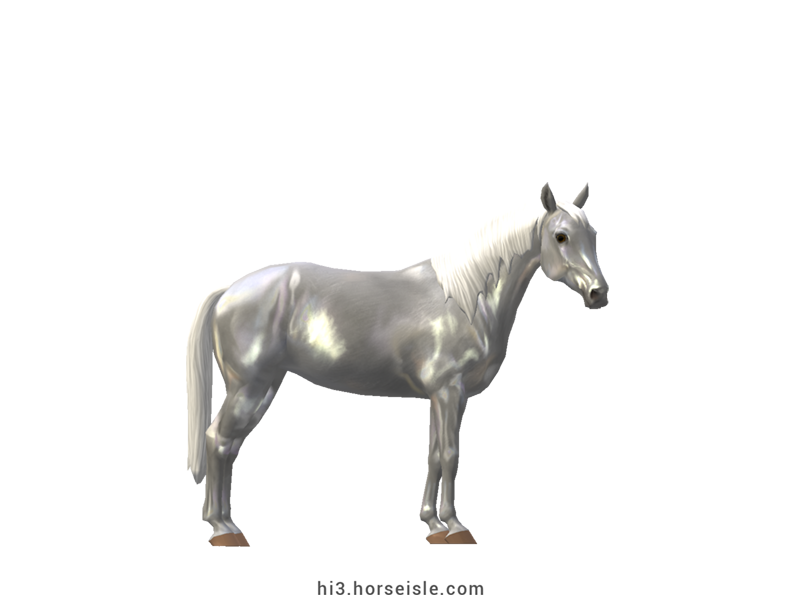Our Massive Real World Equine Reference!
[ INDEX ] Equine Type: Horse Breed: Tersky (Tersk) [ PREV ] [ NEXT ]
The Strelet:
Back in the 19th century, Russian breeders crossed Orlov and Orlov-Rostopchin mares with Arabian stallions. The result was a sturdy breed of an Arabian type, that could survive in the freezing Russian climate.
This breed, called 'Strelet', did well until the eruption of the Russian Civil War in 1917, during which many horses were lost. When the war ended in 1923, only a couple of Strelet horses were left, and the breed was at risk of extinction.
From the Strelet to the Tersky:
In 1925, the few remaining Strelet horses were transferred to the Tersk stud in Russia. Their number was so small that it was impossible to save the Strelet without extensive inbreeding, which would damage this breed.
Therefore, the breeders at Tersk, under the supervision of the famous Russian horse breeder Marshall Semyon Mikhailovich Budyonny, the same breeder who created the Budyonny breed (see 'Budyonny' for more info), decided to use the Strelet stock to create a new breed who is even better than the Strelet.
To achieve this, Strelet horses were crossed primarily with Arabian horses (mostly of the Desert, Polish, and Crabbet types), as well as with Dons, Arab-Dons, and Kabardas. In later stages, Thoroughbred, Trakehner and Hungarian breeds were also used to add height and mass to the evolving breed. Because of these extensive crossbreedings, the Strelet went extinct, but a new and better breed was born: the Tersky.
A breed made for distance:
Originally, Tersky horses were bred for the Russian cavalry, and as such their endurance was constantly evaluated. Terskies were raced over long distances, and only the horses with the best stamina were used in the breeding process. Because of their necessity in war, the development of the Tersky continued well into the years of World War II, and didn't stop even when the Tersk stud was evacuated to Kazakhstan in 1941.
After the war ended in 1945, the entire stock of Tersky horses was transferred from the Tersk stud to the nearby Stavropol stud, where breeders continued to breed them and improve the breed. Four years later, in 1949, the Tersky was officially recognized as a breed.
More than endurance:
In 1953, the Russian cavalry was disbanded, and the Tersky was no longer needed by the Russian military. Luckily, besides its endurance, the Tersky also had natural agility and impressive jumping talent. Therefore, it started to serve as a sport horse, especially for show-jumping, but also for dressage, a role which it still fulfills today.
Unfortunately, despite its jumping talent, energetic temperament, and elegant metallic coat, the Tersky never regained its original popularity, and the breed became endangered.
The Tersky today:
Today, the Tersky is not bred at Stavropol stud anymore, but in smaller farms in the Stavropol region. The documentation and registration of Tersky horses are done by the All-Russian Research Institute of Horse Breeding.
Breeding:
When it comes to breeding, Tersky horses are mostly bred in a pure manner. An influx of Thoroughbred, Trakehner, and Arabian blood is allowed, but to a very limited extent, which is why, in Horse Isle, the Tersky has a closed studbook.
Conformation and subtypes:
The extensive influence of the Arabian breed on the Tersky is extremely noticeable in the conformation of the latter. Indeed, the Tersky is often described as a larger, taller, and sturdier version of the Arabian horse.
As such, it has a slender head with well-defined jaws, and with a straight or dished profile (although not as dished as seen in some Arabian strains). The forehead is wide, tapering to a fine muzzle. The eyes are large, and the ears are medium in length. The neck is high-set, of medium length, noticeably arched, and connects to prominent withers. The legs are more slender than seen in other breeds, but their bones are strong and their muscles are powerful. The mane and tail are fine and silky, and are short to medium in length. The overall build is more muscular than that of Arabian horses.
There are three subtypes of Tersky horses: basic (also called 'regional'), light (also called 'eastern' or 'oriental'), and heavy (also called 'large'). However, in Horse Isle these distinctions don't exist.
A shiny coat:
Tersky horses are known for their bright and silky coats, that have a metallic sheen to them, a trait which they inherited from their Don ancestors (a breed that descends from Turkmen horses who had metallic coats). Therefore, it is not recommended to cross two Terskies who are heterozygous for the metallic gene (Mtmt), because non-metallic foals will be penalized.
Performance metrics:
The following are the: range, average, (SD), and MOE of performance metrics of ordered Tersky horses in Horse Isle (not bred ones). In rare cases,
Speed: 16.0-17.3, 16.7 (0.3), 0.05.
Sprint: 43-58, 51 (3), 0.61.
Accel: 0.86-1.00, 0.94 (0.04), 0.01.
Decel: 0.87-1.01, 0.94 (0.03), 0.01.
Jump: 5.23-5.56, 5.37 (0.06), 0.01.
Pull: 1.78-2.47, 2.10 (0.13), 0.03.
Turning: 48.84-61.72, 56.06 (2.86), 0.56.
Reverse: 2.5-3.0, 2.8 (0.1), 0.02.
Stamina: 42.48-46.53, 44.09 (0.89), 0.17.
Reaction: 0.79-0.87, 0.83 (0.02), 0.00.
Coats & Height:
Colors: usually grey, more rarely bay or chestnut, and in extremely rare cases, brown, black.
Additionals: flaxen, sooty, dark mane & tail. The coat always has a light tone to it unless the horse is sooty, in which case the coat will appear darker due to the sootiness.
Height: 14.3hh to 16hh.
[ INDEX ] [ PREV ] [ NEXT ]

